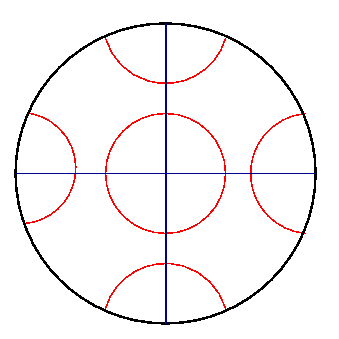The Cultural-Historical View of the
Origin and Evolution of Playing-Cards
and their Suit-Signs and Illustrations
DR HELLMUT ROSENFELD
A paper given at the 1981 Convention of the Society
ONE of the greatest, and for the development of human culture, most
important achievements of the human spirit was the invention of the
ancient Indian numbers, the decimal system and the various arithmetical
systems stemming from them. They have made possible the evolvement of
arithmetical knowledge in the West through Arab intermediaries. On the one
hand, the ancient Indian conception of numbers (one great-year consists of
two billion and 160,000 calendar years!) exceeds our comprehension up to
the present day. But on the other hand, this thinking in numbers was capable
of compressing the understanding of the world into low numbering systems.
Thus, the ancient Indian dice-chess compresses the diversity of political
constellations into the figures of two main adversaries and two allies and
the diversities of hostile controversies into the prescribed individual moves
(again expressed in numbers) of the representative figures of the armed
forces; finally, it reproduces the intervention of chance and fate by determining
the figure to be moved by the throw of dice, and sees the universe
as a playing field (chess board) orientated on the four cardinal points, with
twice-four by twice-four squares.
The game of chess as a two-sided game, with one-directional thinking,
came to Europe via Persia and became the royal game of medieval feudal
society.
A more mobile society of horsemen (in Asia) developed from the same
four-sided dice-chess the game of playing-cards with four suits, liberated from
space (chess board). The uniform army is increased according to the Indian
decimal system to 10 cards; these warrior cards, released from their spatial
values, receive, in the most ingenious way, time values through the arithmetical
ranking from one to ten. By means of two figure or court cards
(king and minister) the ancient Indian decimal system gets aligned with the
Babylonian duodecimal system. It was the barbarian soldier caste of the
Mamluks that added a third figure (the vice-governor) to emphasise its own
importance. They thus created the impossible number of 13 cards for each
suit. They also made in their enthusiasm for the team game of polo, a polo
king out of the king-judge who held a stick for punitive bastonadoes.
Playing-cards in the Mamluk form came to Europe in about 1376. The
numeral cards remained practically unchanged. The figure cards which were
distinguished according to Islamic custom by ornamental and not by figurai
devices, were made in Europe into Kings, Marshalls and later into Queen» or
female servants (Unters). The no-longer-understood suit signs were soon
altered in Europe into most diverse forms and later alienated from normal
usage by the additions of artistic illustrations of greater interest to collectors
than to card players. Even the fate-determining additional cards of the Tarot
game were abused by currently fashionable illustrations.
The mass demand for playing-cards was satisfied by printing from woodcut
plates. The reduction of the obligate 10 numeral cards to nine necessitated
by the mechanical process was accepted by the card playing public. The
colouring of the cards was mechanised by the use of colour stencils. Finally,
in France, the process was further simplified by stencilling the numeral cards
entirely.
Another process, that of copper engraving, side-tracked the essential usage
of playing-cards. It was developed by artists who had little in common with
playing-card makers and who were only interested in creating a new medium
for presenting illustrations. Their laborious technique contradicted the very
idea of industrial mass production. Such cards were not made for practical
use by players as the patterns of animals and flowers on the numeral cards
made their distinction difficult. They became favoured collector items for
an art-loving middle class. Princes ordered cards to be painted for them with
illustrations and suit signs depicting royal circumstances. Even they became
probably exhibition pieces in royal art cabinets rather than cards for a game.
With this European development of usable and artistic cards in view, the
round, and even now hand-made, Indian playing-cards represent a gameorientated
simplicity and gayness of colour which excites our admiration.
 Name of Game: El-Quirkat (Arabia), Alquerque (Spain)
Name of Game: El-Quirkat (Arabia), Alquerque (Spain)
 Name of Game: Horseshoe
Name of Game: Horseshoe




